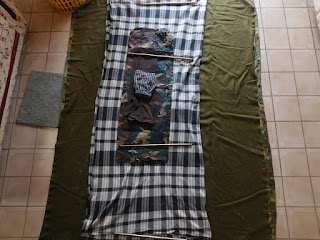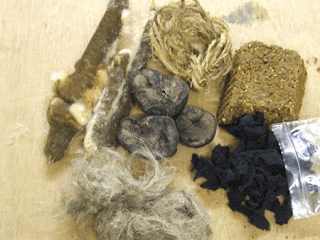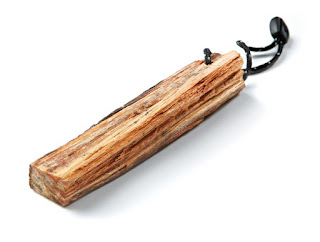My bedroll kit
Having a bedroll is
very traditional way of camping and in fact can be used on its own.
A bedroll can be as
big as you want sometimes containing a small mattress and pillow or as small as
you want sometimes only containing a blanket.
There is no wrong way to do it.
To me a bedroll is
your shelter kit. Everything you need to
set up camp should be in your bedroll.
My bedroll contains.
From top to bottom
Two tent poles
Underwear (socks, underwear, shirt, vest, bra)
Military poncho
Cotton blanket
Wool blanket
Military poncho
This set up is based
of my needs and built on my past experiences and tested.
Improvements that I see would be;
a small tarp
- to either replace or add to the kit
a hammock -
this would increase the functionality of his kit. St Lucia is a
mountainous island and so more often than not natural land is not flat making
sleeping on the ground a great task though not impossible
better straps - I
use two belts to secure my bedroll and latch it to my bag using cordage
. Dedicated straps that could possible also be used carry it without the bag as
well as being used along with my lbe.
My kit for camp when I thought i was going for two weeks. Pouch on the extreme right contains all accessories for my uniforms. Every cadet should have one as it keeps you from forgetting pieces of your uniform and getting booked. LBE suspenders and belt were worn to camp all pouches are on the inside except canteens.
pro and cons of having a bedroll
Cons
- external to your pack
- gets big and bulky real quick
- packing up requires a lot of space
- some skill in knots is needed
Pros
- saves time when packing
- easy to use as soon as possible
- completely customisable
- can be carried without a pack or with LBE
- external from your pack
Tips for making a good bedroll
- will there be rain, mud and anything to protect your stuff from the elements
- is comfort an issue
- what type of shelter do you plan on making
- what size do you want your bedroll
- where are you going to mount it.
- test it at home before use
Leave a comment if your enjoyed it.
Share with your friends.
And remember survival is not a choice but a right earned at birth.
Be the Wolf!







































